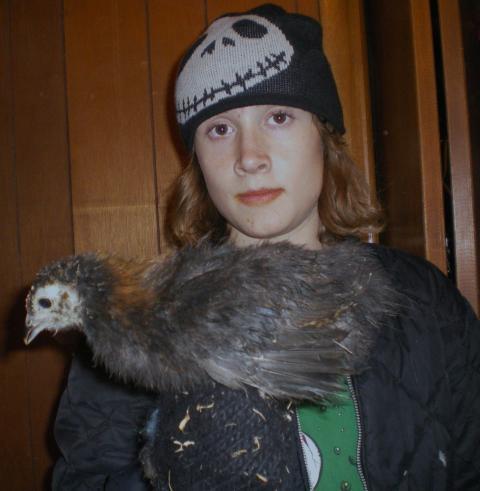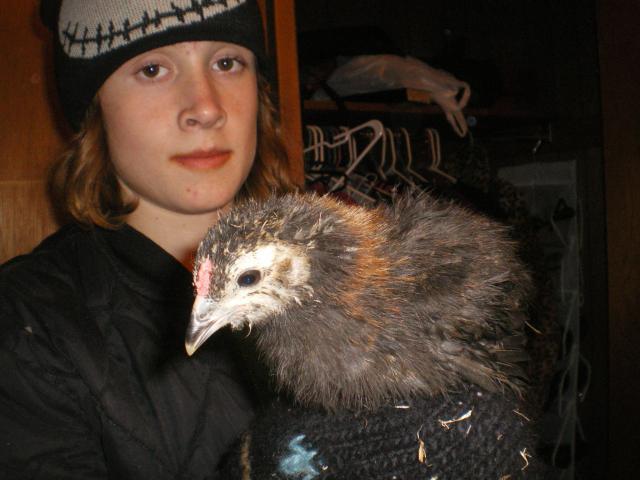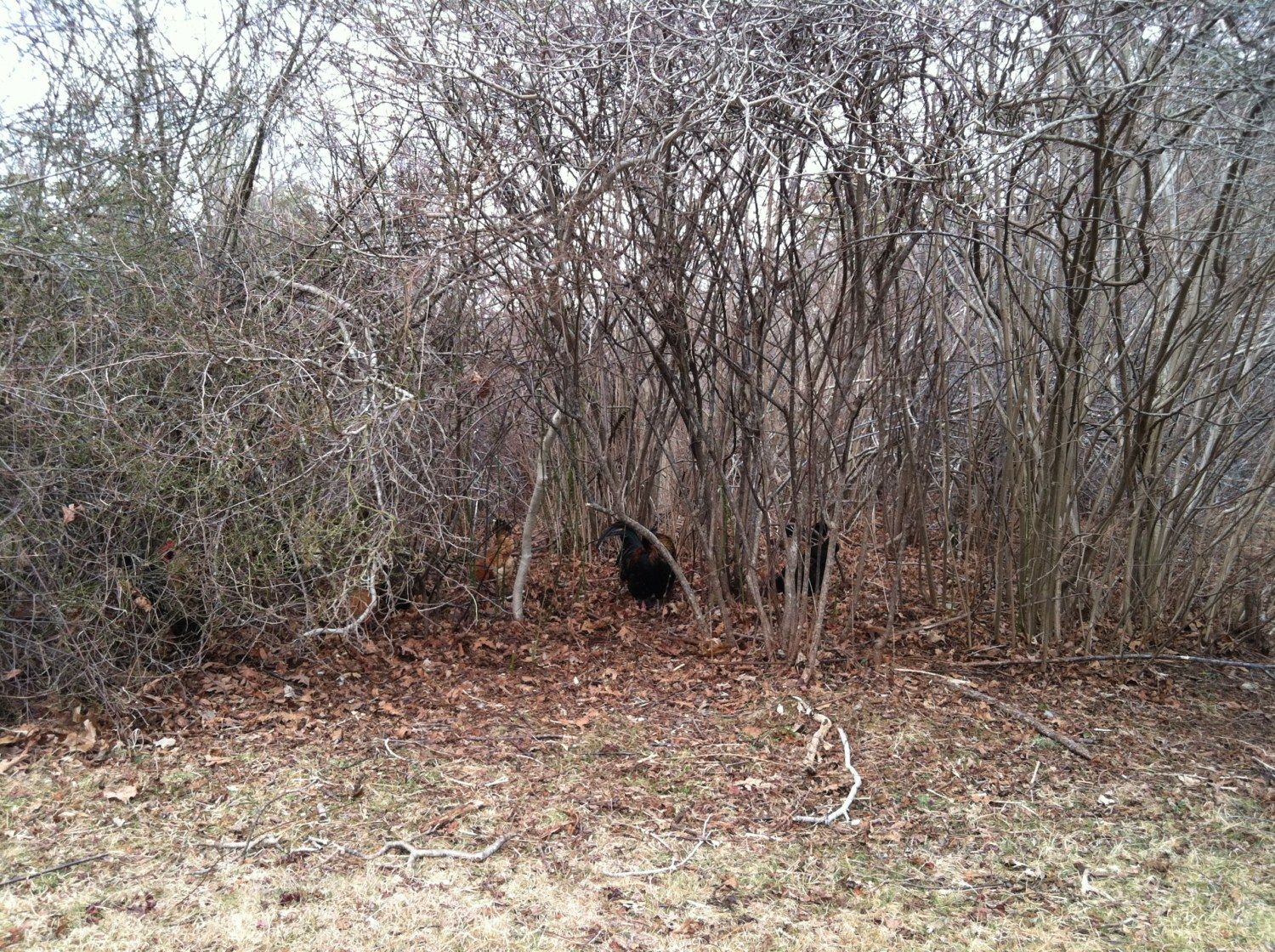where does one get these awesome chickens?
Navigation
Install the app
How to install the app on iOS
Follow along with the video below to see how to install our site as a web app on your home screen.
Note: This feature may not be available in some browsers.
More options
You are using an out of date browser. It may not display this or other websites correctly.
You should upgrade or use an alternative browser.
You should upgrade or use an alternative browser.
Mapuche Huastec Thread
- Thread starter Yashar
- Start date
Cool birds! Great body shape, really interesting head. Thanks for sharing.
- Thread starter
- #13
Quote:
Wow, thanks for that info. I was considering the possibilities of silky background also.
I hatched a chick with a silky "mutation" this year. Cute little thing...
By the way, that last link you gave didn't make much sense.
Quote:
I love the squirrel tale and the way they hold their bodies forward on their short legs.
Wow, thanks for that info. I was considering the possibilities of silky background also.
I hatched a chick with a silky "mutation" this year. Cute little thing...
By the way, that last link you gave didn't make much sense.
Quote:
I love the squirrel tale and the way they hold their bodies forward on their short legs.
Last edited:
- Dec 27, 2007
- 401
- 6
- 131
Yes, but as we all know, Kermit and Resolution are one and the same......this was taken from elsewhere...............and that is where these birds came from...................................chrisf
vyMMRo taldcznyhrmg, qbtgvprqhokd, [link=[URL]http://lkracpkneeyj.com/]lkracpkneeyj[/link[/URL]], http://yduqzqnjscao.com/ [edit]
Description: vyMMRo taldcznyhrmg, qbtgvprqhokd, [link=[URL]http://lkracpkneeyj.com/]lkracpkneeyj[/link[/URL]], http://yduqzqnjscao.com/
From: Kermit (Sat Aug 23 15:04:57 2008)
These Snow Nikkei fowl are the common fowl of the Japanese Nikkei communities of Peru.
http://www.latinamericalinks.com/japanese_in_Peru.htm
They are the descendants of Jitokko chickens brought from Japan in the late 1800's that were bred together with Quetero and Mapuche/Quechua chickens.
Later, in the 1920's Japanese Silky Chickens were brought to Peru and certainly their genes are interspersed as well but the majority of the snowy Nikkei are basically Jittoko Mapuche crosses. Indeed, the Crested Mapuche most likely accrued its crest from the Jittoko as well.
From: ksalguy (Sat Sep 6 21:27:00 2008)
what color egg do these birds lay? also is it true that adding Silkie blood to Aracannas will intensify the blue egg color?
From: zbukdbsphu (Sat Jul 30 23:23:33 2011)
G2b4nK dylwzzkadgbm, wexwlhiiuqvy, [link=[URL]http://sdutckarlyuk.com/]sdutckarlyuk[/link[/URL]], http://txkrvqxfdbme.com/
vyMMRo taldcznyhrmg, qbtgvprqhokd, [link=[URL]http://lkracpkneeyj.com/]lkracpkneeyj[/link[/URL]], http://yduqzqnjscao.com/ [edit]
Description: vyMMRo taldcznyhrmg, qbtgvprqhokd, [link=[URL]http://lkracpkneeyj.com/]lkracpkneeyj[/link[/URL]], http://yduqzqnjscao.com/
From: Kermit (Sat Aug 23 15:04:57 2008)
These Snow Nikkei fowl are the common fowl of the Japanese Nikkei communities of Peru.
http://www.latinamericalinks.com/japanese_in_Peru.htm
They are the descendants of Jitokko chickens brought from Japan in the late 1800's that were bred together with Quetero and Mapuche/Quechua chickens.
Later, in the 1920's Japanese Silky Chickens were brought to Peru and certainly their genes are interspersed as well but the majority of the snowy Nikkei are basically Jittoko Mapuche crosses. Indeed, the Crested Mapuche most likely accrued its crest from the Jittoko as well.
From: ksalguy (Sat Sep 6 21:27:00 2008)
what color egg do these birds lay? also is it true that adding Silkie blood to Aracannas will intensify the blue egg color?
From: zbukdbsphu (Sat Jul 30 23:23:33 2011)
G2b4nK dylwzzkadgbm, wexwlhiiuqvy, [link=[URL]http://sdutckarlyuk.com/]sdutckarlyuk[/link[/URL]], http://txkrvqxfdbme.com/
- Thread starter
- #15
Here is another nice link here on BYC by Resolution about rare heritage stock that focusus some on the Mapuche Huastec.
https://www.backyardchickens.com/forum/viewtopic.php?id=387218
https://www.backyardchickens.com/forum/viewtopic.php?id=387218
Here is my Silky mutation's I have been growing out...


Quote:
Wow, thanks for that info. I was considering the possibilities of silky background also.
I hatched a chick with a silky "mutation" this year. Cute little thing...
By the way, that last link you gave didn't make much sense.
Quote:
I love the squirrel tale and the way they hold their bodies forward on their short legs.


Quote:
Wow, thanks for that info. I was considering the possibilities of silky background also.
I hatched a chick with a silky "mutation" this year. Cute little thing...
By the way, that last link you gave didn't make much sense.
Quote:
I love the squirrel tale and the way they hold their bodies forward on their short legs.








My photos of Huastec are not as great as they might be- iphone... and that last photo has a Rekhmara rooster in the foreground and a Colloncas of similar colouration behind him.
Huastecs are an ancient breed- not to be confused with Nikkei.
For more information about the breed visit this link. Some of the Nikkei in USA are mixed with Huastec and Nikkei are largely Crested Mapuche. In Chile the Crested Mapuche is called Paco Mapuche.
Huastec lay large brown eggs or pale beige only a few lay white and a few hens with Paco genetics lay blue eggs. They are one of the rarest and most unusual breeds with such a unique history they really work well in most settings as they are very quiet and peaceable. They tend toward monogamy- each rooster has his favorite hen. Roosters are cooperators rather competitors with other males. I run them in braces- generally as many roosters as hens as only one or two hens will be fertile with a single rooster.
If you are interested in ancient heirloom corn, tomatoes and potato varieties and want to continue that thread at your farm- the Huastec is the only true Meso-American breed.
A silky mutation does pop up from time to time and these are exciting as the presence of this mutation emerges with a certain amount of inbreeding. The phenomenon pops up in Cemani mutations as well as in Sumatrans and Nikkei. It's easy to imagine that the silky is responsible for the mutation but actually the silky started somewhere and the Huastec is one of the ancient races that are precursors of the wonderful silky breed. When the Chinese arrived in the "New World" they certainly carried black boned fowl but I don't know that they were actually silkies just yet. One thing that's unique about them is the crow of the rooster. They don't sing cock a doodle do! Rather - there's is " So fresh and so clean!"
Hi! I've been enjoying all the informative posts about the ancient South American chickens. I've asked this question in several places; hopefully I'll find an answer here:
How do the Huastecs do in the heat of summer? I would love to have some of these charming little birds eventually, but I live in Texas which of course is summer from March to mid October with 100+ temps for potentially 2 months straight...
How do the Huastecs do in the heat of summer? I would love to have some of these charming little birds eventually, but I live in Texas which of course is summer from March to mid October with 100+ temps for potentially 2 months straight...
- Thread starter
- #20
Well... Sorry about not getting back with you earlier.Hi! I've been enjoying all the informative posts about the ancient South American chickens. I've asked this question in several places; hopefully I'll find an answer here:
How do the Huastecs do in the heat of summer? I would love to have some of these charming little birds eventually, but I live in Texas which of course is summer from March to mid October with 100+ temps for potentially 2 months straight...
I'm looking into this further, but my guess is that they would be fine in the conditions your speaking of. These chickens are originally from Southern Mexico and Ecuador. So heat is not something new to them.
Mazatlan, a southern Mexico city, experiences average highs of 90 to 92 degrees in July and August. The coolest month in Mazatlan is January, when high temperature reach an average between 80 and 82 degrees. Puerto Vallarta, on the Pacific coast, has average highs during August and September between 90 and 95 degrees.
My thought is that you just have to be sure to give them plenty of fresh agua.
~Yashar
New posts New threads Active threads
-
Latest threads
-
My duck has wet feather and I don't see what could be causing it.
- Started by Homo sapien
- Replies: 1
-
-
Two properties - would it be too stressful to move chickens back and forth?
- Started by twunder
- Replies: 2
-
-
-
-
Threads with more replies in the last 15 days
-
Heater or heat panel -10
- Started by IowaCHKN
- Replies: 155
-
-
Introducing TUDYBOOK - The Tudy Coloring Book Generator
- Started by Nifty-Chicken
- Replies: 56
-
-
Ended BYC Pets & Livestock Caption Contest 12-12-25 Pic by Gill-b
- Started by TwoCrows
- Replies: 45
-
×





